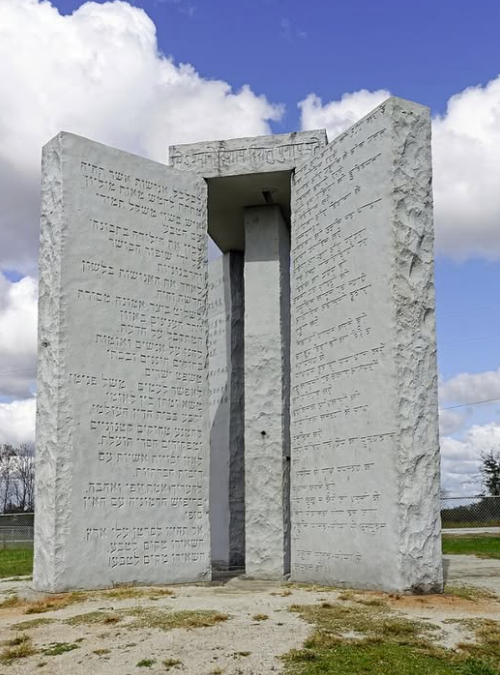The Georgia Guidestones are one of the most enigmatic mysteries in the state and also one of the most unusual. In 1969, a well-dressed stranger walked into the Elberton Granite Finishing Company with a scale wooden model and ten pages of specifications for the project. The stones would be placed at an elevation of 750 feet above sea level, just north of Elberton, approximately 90 miles east of Atlanta, and 45 miles from Athens.
The man called himself R.C. Christian, and the monument he commissioned resembled a mini-Stonehenge, with granite slabs weighing 237,746 pounds and standing 19 feet, 3 inches tall. Before leaving, Christian explained he had purchased a five-acre tract from a local farmer, Wayne Mullinex, and that he was part of a group that had planned this endeavor for over twenty years. The man had one request that the plans for the project and all personal information about him be destroyed and withheld from the public.

Finally, on March 22, 1980, the finished monument was unveiled in a cow pasture, 9 miles from the center of Elberton, with an estimated crowd size between one hundred and four hundred in attendance on that spring day.
The monument was inscribed in eight different languages, with the names of four ancient languages at the top. Since the Guidestones first appeared, they have been shrouded in controversy and mystery. However, it may be the mysterious circumstances surrounding their departure that have captured the most attention.
On July 6, 2022, a man approached the Guidestones with an object and left in a silver sedan. A short time later, a bomb went off, destroying the monument. The remaining stones were demolished for safety reasons.
The person responsible for the bombing is still unknown. What was the purpose and reason behind the project? Who was R.C. Christian? Why was Elberton, Georgia, chosen for this project in 1969?
Written By: John G. Clark Jr.
Source: Alan Brown, Unexplained South

